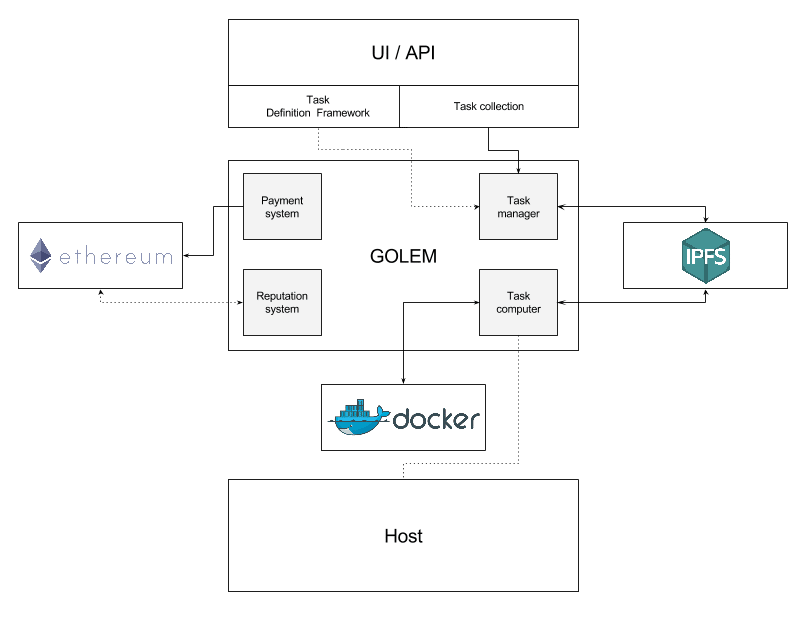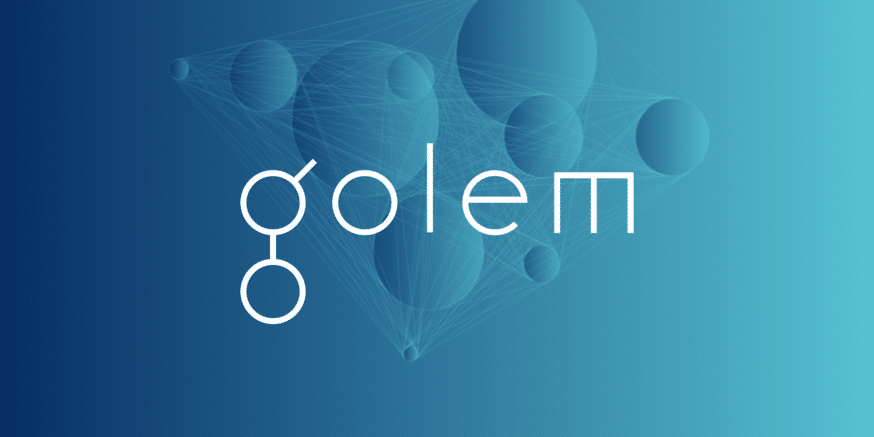What Is Golem?
Golem is a worldwide, decentralized supercomputer that combines the computing power of every machine on its network. In the Golem ecosystem, you can loan out your computer’s spare resources to others who need the additional power to perform complex computations and tasks. Following the same trend that led to Uber and Airbnb, this sharing economy is a solid way to make some extra money with your unused and/or underused resources.
On the flip side, you can rent computing power from the network to perform or even just speed up tasks that your computer has trouble handling. Renting is ideal if you routinely perform intensive calculations for activities like natural language processing (NLP), artificial intelligence (AI), or even machine learning for DNA exploration. However, the Golem team is first focusing on CGI rendering – an area riddled with expenses and long wait times.
In this Golem guide, we’ll cover:
- How Does Golem Work?
- Golem Network Token (GNT)
- Golem Team & Progress
- Trading
- Where to Buy GNT
- Where to Store GNT
- Conclusion
- Additional Golem Resources
How Does Golem Work?
Let’s walk through the entire process of a requestor (party who needs to perform a computing task) using the Golem network.
To keep it simple, let’s assume that the requestor’s task is the same class as one of the task templates that Golem provides. If it wasn’t, the requestor would have to write his/her own code for the task using the task definition framework. However, this option isn’t available in the first two releases – Brass and Clay. Performing tasks in a different class than the task templates will be available in the third release, Stone.
Blender and Luxrender are the only two task templates available in the first Golem version, Brass. Eventually, the set of task templates will turn into the Golem Shop where you can add and use new templates on the network.
Back to our example, though. After the requestor chooses a template, the task is added to the task manager, and the network receives the information about the task.
A provider (party providing the computing power) receives all the broadcasted task offers and selects the best one. In doing so, it also checks the reputation of each node broadcasting the tasks and rejects ones with a poor reputation. When a provider finds a suitable offer, it sends a price and its computing power information to the requestor. In return, the requestor verifies that the provider has a high enough reputation to work with.

If all is kosher, the provider receives the appropriate resources via IPFS and begins the computation on the task computer. Once the task is complete, it sends the results to the requestor back through the IPFS network.
Then, the task manager passes the information to the appropriate node to verify the results. The requester may decide to send it to multiple nodes for redundant verification.
Finally, the payment system is notified through an Ethereum smart contract, and funds move from requestor to provider. If the provider sends accurate results and the requestor pays on time, both parties will see an increase in their reputation.
Additional Features
Outside of the scenario outlined above, Golem contains two other related features.
- Application Registry – An Ethereum smart contract for developers to publish their own Golem applications. This makes it easier for developers to find users and requestors to find the tools they’re looking for.
- Transaction Framework – A set of requirements that a developer must follow when implementing a transaction model for their self-made Golem application.
Golem Network Token (GNT)
GNT is an ERC20 token that you use to pay for the computing power that you rent. As a provider, you’re free to set your GNT rental price at whatever you deem is appropriate. Because Golem is a marketplace, these prices should find an equilibrium over time. You’ll also need GNT to submit deposits as a provider and participate in the Application Registry.
The Golem team minted 1,000,000,000 GNT during the ICO of which 82% was distributed to the crowdsale participants.
[thrive_leads id=’5219′]
Golem Team & Progress
Golem is led by Julian Zawistowski who’s also an advisor to Hoard, a blockchain platform for the video game industry. The team first released the alpha, Brass, in August 2016. Brass includes Blender and LuxRender, two tools for CGI rendering. Later releases are as follows:
- Clay – Includes the Application Registry and Task API. In this release, developers will be able to integrate with the platform.
- Stone – Includes the Certification Mechanism and Transaction Framework. With this release, Golem can be used in a SaaS model.
- Iron – Has increased security and stability. This version allows developers to create applications that run outside of the sandbox.
The long-term vision of the Golem team is to build a decentralized platform of microservices acting as the “new Internet of tomorrow.” Golem is currently in the Brass Beta version 0.18.2. The team’s slow-moving development timeline has some community members upset. However, others argue that the slow and secure approach is necessary for a project of this magnitude.
Competition
There are a few similar projects to Golem that the team addresses on their FAQ page. The most notable project is iExec; however, it’s primarily focusing on requestors who want to run off-chain computations. The Golem team believes that there won’t be any use-case overlaps between the two in the immediate future and they may even be able to work together later on.
SONM and BOINC are also working to solve similar problems. SONM uses third-party frameworks whereas Golem doesn’t, and the Golem team states that BOINC is a more centralized solution.
You could also argue that AI-focused blockchain projects like SingularityNET and DeepBrain Chain are competing with Golem because they’re all pooling computer resources on their networks
Trading
Throughout its trading history, the GNT price has risen from ~$0.01 (~0.00001 BTC) to a temporary high of ~$0.68 (~0.00027) before falling back down to ~$0.20 (~0.00003 BTC). This past December (2017)/January (2018) it followed the rest of the market in rocketing to hit an all-time high around $1.16 (~0.0008 BTC) before crashing down to about $0.20 (~0.000031 BTC).
The GNT price then saw a sharp increase upwards in April 2018 reaching a local high of a little over $0.80 (~0.000083 BTC). This move from Brass Alpha to Brass Beta most likely caused this drastic change. Following that high, the price has continued to fall and is currently at around $0.06.
Formally a top-10 cryptocurrency by market cap, Golem has slipped down in the ranks. With an alpha product that took almost two years to upgrade to beta, investors may be frustrated with the time it’s taken for the product to develop. Future releases may lead to price increases while a CGI company partnership announcement could also help. Of course, the price would benefit from a return of a bull market as well
Where to Buy GNT
There are several exchanges on which you can purchase GNT; however, it’s traded with the highest volume on Binance as a trading pair with BTC and ETH. GNT is also available on Huobi, Bittrex, and Poloniex.
Now that the Golem beta is available, you can also receive GNT for renting out your computing power.
Where to Store GNT
You can store your GNT in any wallet with ERC20 support. The most popular options are MyEtherWallet and Mist. If you’re willing to shell out a few shekels, you should use a hardware wallet like the Trezor for additional security.
Conclusion
Golem is a distributed supercomputer and computing power marketplace. Available since the middle of 2016, the coin was previously a top-10 crypto by market cap but has since fallen in the ranks. This fall doesn’t mean that the team has stopped progressing, though.
They’ve been consistently improving the Brass Alpha and have released the Brass Beta. Additionally, they’ve ramped up tech support, community outreach, and are expanding their reach worldwide.
With similar projects chomping on Golem’s heels, this year should determine if slow and steady really does win the race.
Editor’s Note: This article was updated by Steven Buchko on 12.07.18 to reflect the recent changes of the project.





